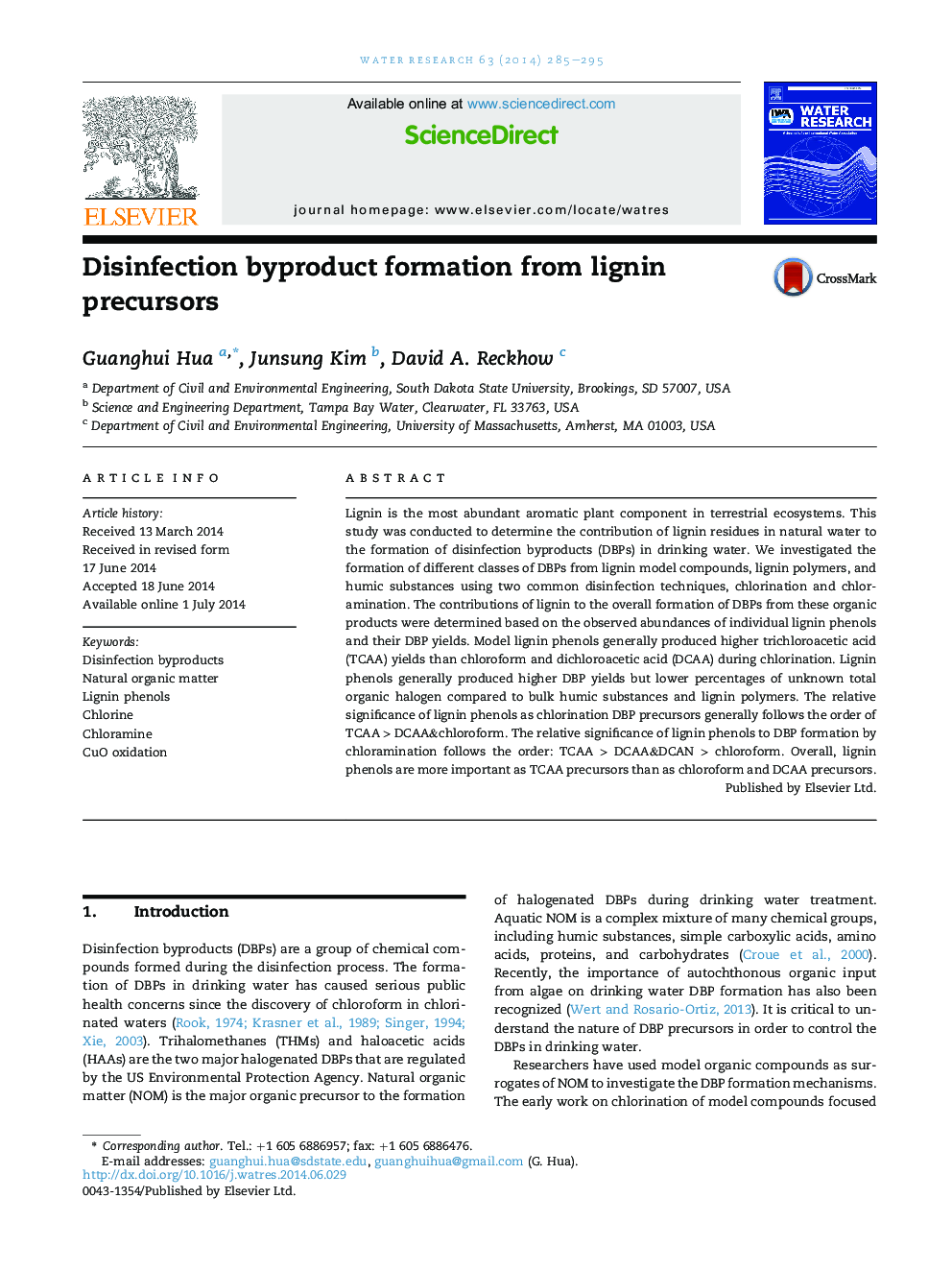| کد مقاله | کد نشریه | سال انتشار | مقاله انگلیسی | نسخه تمام متن |
|---|---|---|---|---|
| 4481481 | 1623105 | 2014 | 11 صفحه PDF | دانلود رایگان |
• Contributions of lignin phenols to chlorination DBPs: TCAA > DCAA&chloroform.
• Contributions of lignin phenols to chloramination DBPs: TCAA > DCAA&DCAN > chloroform.
• Model lignin phenols produced higher DBP yields than bulk NOM.
• Model lignin phenols produced lower percentages of unknown DBPs than bulk NOM.
Lignin is the most abundant aromatic plant component in terrestrial ecosystems. This study was conducted to determine the contribution of lignin residues in natural water to the formation of disinfection byproducts (DBPs) in drinking water. We investigated the formation of different classes of DBPs from lignin model compounds, lignin polymers, and humic substances using two common disinfection techniques, chlorination and chloramination. The contributions of lignin to the overall formation of DBPs from these organic products were determined based on the observed abundances of individual lignin phenols and their DBP yields. Model lignin phenols generally produced higher trichloroacetic acid (TCAA) yields than chloroform and dichloroacetic acid (DCAA) during chlorination. Lignin phenols generally produced higher DBP yields but lower percentages of unknown total organic halogen compared to bulk humic substances and lignin polymers. The relative significance of lignin phenols as chlorination DBP precursors generally follows the order of TCAA > DCAA&chloroform. The relative significance of lignin phenols to DBP formation by chloramination follows the order: TCAA > DCAA&DCAN > chloroform. Overall, lignin phenols are more important as TCAA precursors than as chloroform and DCAA precursors.
Figure optionsDownload high-quality image (158 K)Download as PowerPoint slide
Journal: Water Research - Volume 63, 15 October 2014, Pages 285–295
